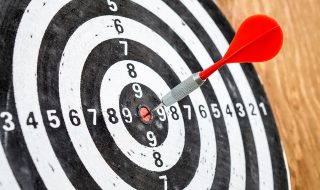
One of the most important decisions you’ll make in your trading career is deciding how you’re going to trade. You see, that decision will set the tone for the rest of your trading, and it will determine which tools you use, what markets you focus on, how active you have to be, etc.
Now, even though this is an incredibly important decision, it’s something most beginners overlook, and that can be a very costly move. We, together with BullMarketz.com, listed four of the most common types of traders with a description of what sets them apart.
Before we get started, we need to clarify that your trading style isn’t written in stone and you can always change your strategy down the line. Just keep in mind that it’s much easier to trade if you stick with the same type of trading, at least for a few months at a time.
Scalp Trader
Scalping is perhaps the most extreme form of short-term trading there is today. This trading style was designed by day traders that wanted to shorten their trading times in order to benefit from more market movements.
Often times, a position isn’t held open for more than a couple of seconds, and the key to succeeding is to set short-term goals and remain incredibly focused on the smallest price changes. In order to succeed with scalping, you will have to make split-second decisions, and your goal is to make a lot of profit from many small trades.
Many scalp traders focus on volatile instruments such as cryptocurrencies and they often prefer trading with leverage and margins by using CFDs and other derivatives.
Naturally, this type of trading can, at times, be associated with increased risk, but that’s also a part of the attraction.
Day Trader
Day trading is perhaps the most known type of short-trading out there, but it’s also a term that’s often used incorrectly.
Most professional traders that work on their own or handle other people’s’ portfolios are day traders, and the concept revolves around making several well-planned and well-executed trades every day. For you to make it as a day trader, you’ll need an in-depth understanding of the markets you’re trading on, the tools you use, and the analytic strategies needed to place profitable, short-term positions.
What separates scalping from day trading is that day traders often sit around for long periods of time waiting for the perfect market conditions while scalp traders dive headfirst into any potential opportunity. Moreover, day traders need to be incredibly resilient to stress.
Swing Trader
Swing trading is typically perfect for people who don’t have the time or patience to spend all day in front of the computer analyzing assets and markets. Many traders that have regular day jobs are swing traders because it gives them the opportunity to keep their jobs while also trading.
Generally speaking, a swing trader is a position that’s kept open for longer than a day trade. It can range from overnight to a couple of days or even weeks if the conditions are right.
For many beginners, swing trading is the most natural option right at the beginning of their trading journey since it’s considerably less stressful and demanding than both day and swing trading.
Investor
An investor or position trader is someone who buys an instrument with the intention of selling it a few months to several years later. Because of the long time frames, most don’t consider them traders but rather investors, although investing is often combined with short-term trading.
The benefit of long-term investing is that it requires little to no work after the initial investment, and many times the profit is completely passive. Another perk is that long-term investing is suitable for more markets than short-term trading. For example, you can invest in real estate and keep that investment for years, but it’s not as easy to try and day trade on the value of a property.




